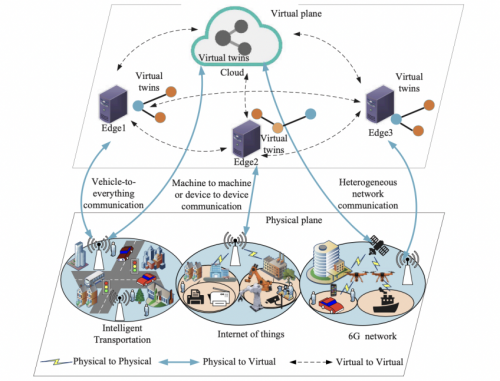Introduction to Edge Computing: Difference between revisions
add image path |
update image config. |
||
| Line 3: | Line 3: | ||
Edge computing was developed to address the challenges of cloud computing, such as slow response times, security risks, and the overwhelming data traffic caused by the increasing number of internet-connected smart devices. By processing data closer to its source instead of relying on distant cloud servers, edge computing ensures faster and more efficient performance. | Edge computing was developed to address the challenges of cloud computing, such as slow response times, security risks, and the overwhelming data traffic caused by the increasing number of internet-connected smart devices. By processing data closer to its source instead of relying on distant cloud servers, edge computing ensures faster and more efficient performance. | ||
[[File:intro_to_edge.png]] | |||
[[File:intro_to_edge.png|500px|thumb|center|Real-Time Edge Adoption]] | |||
With the rise of the Internet of Things (IoT) in the early 2000s, experts predicted that by 2019, a significant share of IoT data would be processed at the edge rather than in centralized cloud data centers. This shift was driven by the need for rapid responses in applications like self-driving cars and smart cities, where even minor delays could have serious consequences. Unlike traditional cloud computing, edge computing enhances security, reduces latency, and processes data locally, relieving pressure on the internet while improving overall efficiency. As technology continues to evolve, edge computing plays a crucial role in enabling faster, safer, and more reliable digital experiences. | With the rise of the Internet of Things (IoT) in the early 2000s, experts predicted that by 2019, a significant share of IoT data would be processed at the edge rather than in centralized cloud data centers. This shift was driven by the need for rapid responses in applications like self-driving cars and smart cities, where even minor delays could have serious consequences. Unlike traditional cloud computing, edge computing enhances security, reduces latency, and processes data locally, relieving pressure on the internet while improving overall efficiency. As technology continues to evolve, edge computing plays a crucial role in enabling faster, safer, and more reliable digital experiences. | ||
Revision as of 21:11, 1 April 2025
Introduction to Edge Computing
Edge computing was developed to address the challenges of cloud computing, such as slow response times, security risks, and the overwhelming data traffic caused by the increasing number of internet-connected smart devices. By processing data closer to its source instead of relying on distant cloud servers, edge computing ensures faster and more efficient performance.

With the rise of the Internet of Things (IoT) in the early 2000s, experts predicted that by 2019, a significant share of IoT data would be processed at the edge rather than in centralized cloud data centers. This shift was driven by the need for rapid responses in applications like self-driving cars and smart cities, where even minor delays could have serious consequences. Unlike traditional cloud computing, edge computing enhances security, reduces latency, and processes data locally, relieving pressure on the internet while improving overall efficiency. As technology continues to evolve, edge computing plays a crucial role in enabling faster, safer, and more reliable digital experiences.